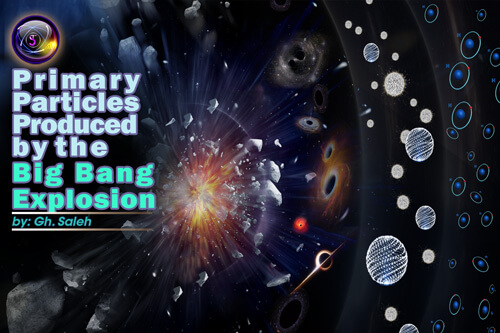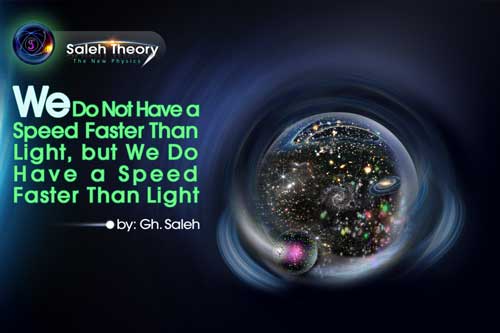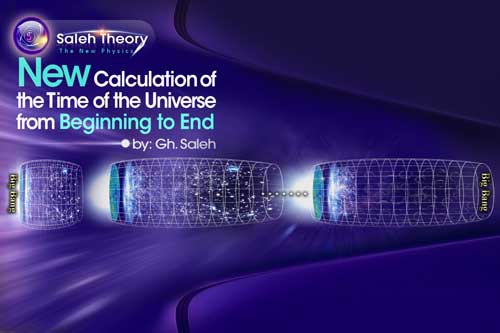
New Calculation of the Time of the Universe from Beginning to End
a) Towards Fire
b) To Coldness
c) From Big Bang to Big Bang
Considering that the universe was created from the Big Bang phenomenon and the Big Bang is an explosive process, it can be said that the universe continues to expand after the formation of stars, and the galaxies move away from each other.
According to the motions of the universe which includes the rotational motion that is proved by Hubble's law and that of linear which is a motion with negative acceleration, the equations of motion can be written for the universe.
On the other hand, we have calculated the initial energy released from the Big Bang explosion by Monte Carlo technique in previous articles, and the amounts of 10110 joules was obtained.
Some of this energy is used for creation of the galaxies and stars, which have a mass of about 1053 kg, and the amount of initial energy is reduced.
So, it can be said that the linear velocity of the world decreases with the passage of time and reaches zero at the end, and when the amount of linear energy becomes zero, the rotational energy achieves its maximum.
Therefore, the rotational motion starts from the first moment of Big Bang and at the point where linear velocity “v” is equal to zero (return point) the rotational velocity reaches the maximum value (according to the law of conservation of energy that states the total energy of a system remains constant)
Now the following relations can be written:
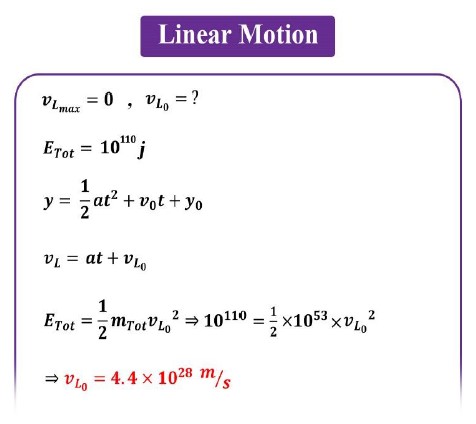
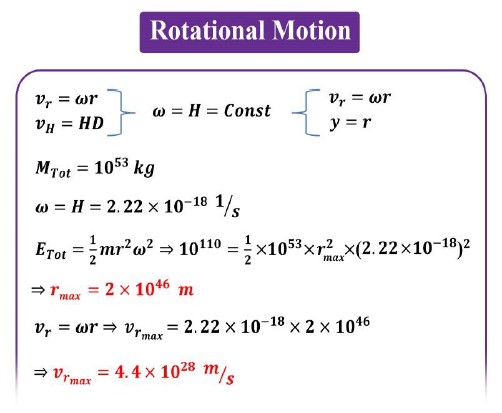

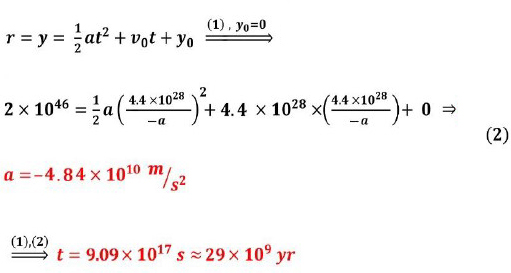
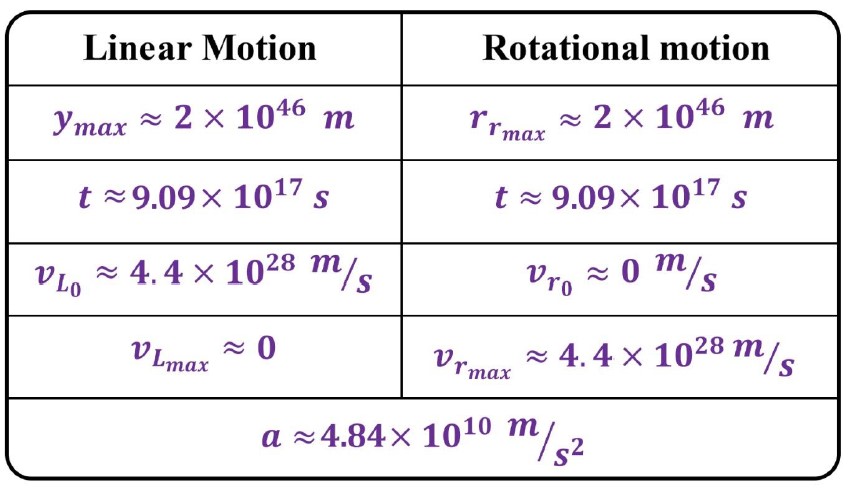
The above table is the result of all the rotational and linear motions of the universe, and it means that in the next 15 billion years the universe will come to a standstill (in terms of linear velocity).
In fact, we can say that the amount of energy and velocity of the linear motion have tended to zero, and that those of rotational motion will reach the maximum value.
Let us now see what the image of the Milky Way will look like after 15 billion years:
Knowing the swallow rate of the Milky Way black hole (the number of stars that swallow per billion years) and taking into account that 6 billion years have passed since the age of our galaxy and the black hole in the center of the Milky Way has swallowed about a few percent of the stars, we can predict that after 15 billion years the Milky Way will be as it is today and that only a few of its stars will be swallowed. Thus, the central black hole will grow only a little more.
Therefore, at the end of the expansion of the universe, only about 10% of the stars in the galaxy will disappear or be swallowed by the black hole, and there will be no particular change in the shape of the galaxies. So it can be said that at the end of the expansion, in 29 billion years, the universe will neither heat nor cool, but will have a return point to the initial point of the Big Bang.
Specifications and features of the return point:
Considering that after 29 billion years from the beginning of the Big Bang, the universe reaches a point of stagnation or a point where its linear velocity becomes zero and the rotational velocity reaches its maximum, the structure of the remaining 15 billion years of galaxies until the end of 29 billion years is that the structure of galaxies will not change much (the number of black holes will increase)
To calculate the return time, the following relations can be suggested:
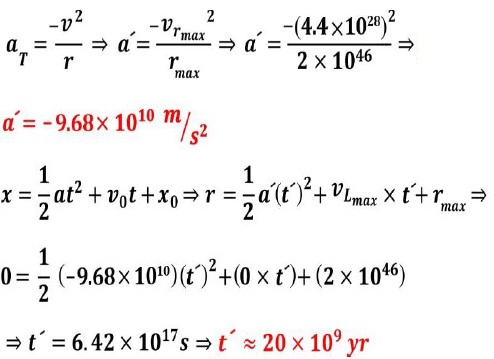
Note:
According to the above calculations, it can be said that the universe returns to its initial point approximately every 50 billion years. Like an unstuck spring that compresses again, or like a planet that revolves around the Sun and returns to its point of origin. The universe therefore has a back and forth motion that repeats itself every 50 billion years. (Cycle period)





